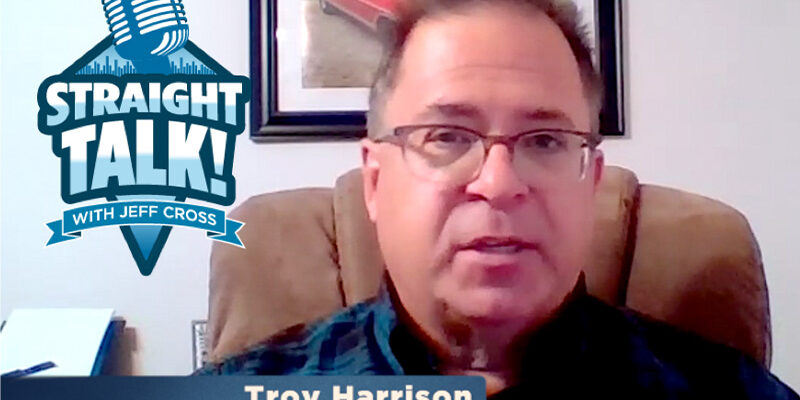Third-Party Administrators: The good, the bad, and the…

The good, the bad, and the ugly. All three of these adjectives are 100% accurate when talking about third-party administrators (TPAs). The million-dollar question is: to join or not to join?
What is a TPA?
Before diving into the pros and cons of third-party administrators, it’s important to understand at a very basic level what a TPA is. In the property and casualty world of insurance, a TPA is an outside company that an insurance carrier has contracted to help with their claim management and reviewing estimates. The TPA is given specific guidelines from the insurance carrier as to what billing practices they will or will not accept. Keep in mind, there is much more that a TPA does; however, for the sake of keeping everything at an elevated level, we won’t go into more detail in this article.
Having been in the restoration industry for more than 17 years and a partner in a large restoration company that handled thousands of TPA claims, I’m keenly aware there are very strong opinions regarding TPAs. Having transitioned from being a partner in a restoration company to now being a consultant for other restoration companies, I’m constantly asked by my clients if they should enter the TPA world. It amazes me how much misinformation is out there when you dive into the nitty-gritty of whether a TPA is the best choice for your restoration company. With that being said, let’s get down to business and talk about the good, the bad, and the ugly!
The good
Many of you reading this may disagree with me, but believe it or not, there are some real benefits to partnering with a TPA. First and foremost, if your reason for getting into the restoration industry was to make money (hopefully, that wasn’t the only reason), then TPAs can be a great avenue that can allow for that to happen.
I’m sure many of you are thinking I’m crazy and waiting for me to explain how third-party administrators can actually be beneficial to your company. With that being said, let’s review some of the benefits that TPAs can extend to your business.
TPAs send work directly to your company.
This fact, in and of itself, is a huge benefit (if not one of the biggest). Think about how competitive it is to get jobs in this day and age. Five to 10 years ago, you could buy your way onto the internet; however, that avenue is getting fiercely competitive, and Google knows it.
Ask yourself this question: What am I currently paying for an internet lead? Most of my clients are paying anywhere from US$300–$800 per lead. With that same cash, go through all your call tracking and find out what your closing ratio is. My guess is you are somewhere around 50% (I have clients who are higher than this, and I have clients who are lower; this is an average). Do the math and find out how much you are spending on jobs that don’t go through.
When I ask my clients what their closing ratio is on internet leads, most of them tell me they are around 70%–80%. I will challenge them on that number and have them go back and do a true analysis of their conversion rate. In every case where they have done this exercise, they come back in disgust, realizing that their closing ratio is much lower than what they told me. With TPAs, your closing ratio should be at least 85%. At my last company, we were around 90%, and we handled hundreds of TPA assignments per year.
TPAs are much cheaper than a sales rep.
If you hire a sales representative, you’ll be paying that person a salary anywhere from $40,000–$90,000. Keep in mind they will need a vehicle, gas, and a marketing budget. Long story short, you’ll probably have a burden rate of around $100,000 per year by the time everything is said and done.
TPAs aren’t free, but generally speaking, their fee for handling the claim is going to be around 5%–10%, depending upon which programs you join. Based upon my experience, if you hire a sales rep, there is a 50-50 chance they will work out. If they don’t work out, think about all the money down the drain you just spent. If you don’t like a TPA, you just turn it off or cancel the program. No money out of your pocket and no unemployment.
TPAs are strict with their contractor requirements.
Most contractors can’t stand all the back and forth that happens with a TPA. However, if you take a step back and look at your company with a 10,000-foot view, you will see that many of the requirements from third-party administrators actually force you to run a better operation. It makes you elevate your game, your techs become better at documenting, and ultimately, you have less liability exposure.
I always tell owners that if they want to run a better operation and improve efficiency and job documentation, they should consider joining a TPA, because it will force you to up your game.
TPAs usually pay you directly.
Have any of you been taken advantage of by a homeowner who never paid you $10,000, $50,000, or even $100,000 for work you did? One of the biggest benefits of joining a TPA is that you generally get paid directly by the TPA, rather than by the customer.
Think about how many hours your office administrator and your outside field technicians spend trying to chase down money on jobs. Think about all the overwhelming debt you have to write off every year because of deadbeat owners. There is a lot of wasted time and money spent trying to collect from your clients. TPAs can help alleviate that problem by bypassing the homeowner and directly depositing the money into your bank account.
TPAs can help level workflow.
If there is one thing in this industry that is difficult to predict, it’s knowing how to schedule your workflow. One day you might be completely slammed, and three days later, you might not have a single job on the schedule. TPAs can be a great way to help fill in the gaps during slow times.
Third-party administrators are another tool in your arsenal that can allow you to diversify where your jobs begin. I always preach to my clients that they need at least three to five different industry-specific revenue streams. If all your eggs are in one basket, you run a considerable risk of jeopardizing your company’s future success.
The bad and the … ugly?
TPAs are from the devil! Yes, that can be true, and there are many things to not like about what they are doing. There are very strong sentiments in the industry that insurance carriers are turning all of their work over to TPAs, so they can price-fix the industry.
It seems there is some pretty convincing evidence that might be true, and for that reason, many restoration companies loathe third-party administrators. The list of negatives about TPAs is so extensive that I might not be able to fit all of it into one article, but I want to highlight a few of the really big areas of concern.
Price-fixing.
Of course, we know TPAs and the carriers won’t say they price-fix because it’s illegal to do so, but as contractors, we sure feel like they are trying to fix the pricing on the work that we do. We all know that we can try and bill what we feel is fair. However, with a TPA, you have signed a legally binding contract saying you will abide by its terms of service—including its pricing policy.
Fees.
If you get a job through one of the TPA’s carriers that didn’t come through the TPA vendor program, you still must pay its fee. Example: You have a sales rep who has a great relationship with an insurance agent. The agent calls your office to send you a job for one of their clients. You respond to the job, get the contract signed, and start work. The TPA vendor is still going to make you run the job through their program, and you will have to pay the 5%–10% TPA fee. (There are third-party administrators who say they don’t do this; however, I would caution you to be careful.)
TPAs hire ‘scrubbers’ to review your estimates.
Scrubbers are individuals who basically have a bullet point list in front of them, telling them all the things you can and can’t charge in regards to a job. Their job is to go through and flag every single item that doesn’t align with their software-generated checklist. Do you think these scrubbers have real-world experience? Do they have actual job-site knowledge? In most cases, they have never stepped foot on a job. Trying to explain to a scrubber why you had to put fans in a closet while they are telling you that you have exceeded the number of fans based upon a drying chart they are looking at can be really frustrating.
Navigating a TPA program can be time-consuming.
The amount of administrative manpower it takes to navigate a TPA program effectively can be very tedious. Many companies must hire additional staff simply to keep up with all of the tasks associated with being a vendor for their TPA.
You might not get as much work from a TPA as you’d think.
Many owners believe the phone will start ringing off the hook once they get accepted into a TPA program. That is not the case! Many clients have yet to receive a single job after 6–12 months. Just because you are in a program doesn’t mean you will get work. Third-party administrators typically have a list of contractors who get the brunt of the assignments. Unless, for some reason, those contractors get too busy or start failing to keep up with all of the requirements, there is a good chance you won’t get much work.
Some TPA programs require an annual subscription.
This subscription can range from $200–$1000. Think about how much money that TPA makes for doing no work whatsoever. Try to contact the vendor coordinator in your area before paying any application fees. You want to make sure there is a chance you will actually get work.
The amount of necessary job documentation has gone up significantly.
It almost seems that TPAs are more concerned about you taking a photo of a blue fan than they are about you actually doing work to help the homeowner. When your technician says they had to spend 1–2 hours documenting a job because of TPA requirements, you know that things have gotten out of hand.
Most TPAs require you to use specific software to run their jobs.
Restoration companies pay upwards of $250–$1,500 per month on software because the TPA and/or carrier require it on their jobs.
Money!
Yes, it can be much more challenging to make your margins on TPA jobs. Remember you are the one who signed their contract saying you would follow their pricing guidelines. That means you might be making less than you could outside of a TPA space.
I try to remind my clients that they have to be open to all ideas, including the good, the bad, and the ugly. According to many clients, TPAs are ugly, and they tell me they can’t make any money off them. How do I respond to this? If you are telling me there isn’t any money to make in TPA work, please explain to me why companies like Belfor, ATI, Blusky, Servpro, Servicemaster, and Paul Davis are on TPA programs. When you have billion-dollar companies who utilize TPAs, rest assured, they are making money, or they wouldn’t be a part of it. They have learned to play the game, and by learning the game, they are still being very profitable.
What’s my own opinion when it comes to third-party administrators? I don’t like them, but I certainly think there is value in being part of their program. Anything that allows me to diversify where my work comes from is invaluable. Plenty of restoration companies are making excellent margins with TPA work. Take the time to learn the system along with all of the ins and outs. If you find that you can’t make margin after exhausting all of your resources, then get off the TPA. No harm, no foul.
What’s the main takeaway of all of this information? Ultimately, TPAs aren’t going to disappear; if anything, the space is getting more crowded with new TPAs daily.












